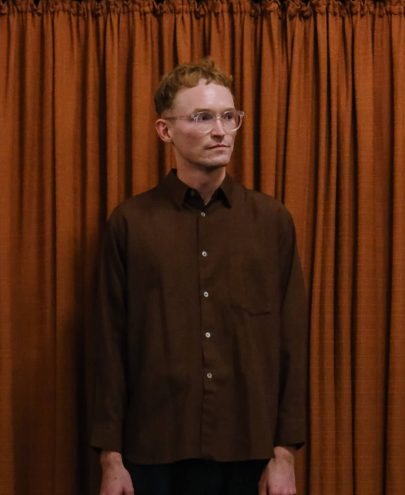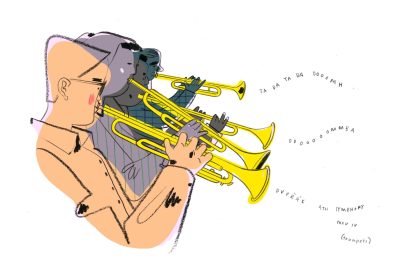Jun 17, 2013 Music
Auckland Town Hall
June 14, 2013
“I don’t confuse greatness with perfection. Perfection takes no risks with itself. To be great is the higher achievement”. This is a quote from memory, and therefore it is probably not word-perfect; the author (Lois McMaster Bujold) would presumably have no problem with that.
When I last heard the Tokyo String Quartet, in New York in the mid-90s, they were the perfect chamber group. I was very bored. Every note was exactly what it ought to be, every phrase was immaculate. This is hard to achieve. Achieving it without animating the music is almost harder; at any rate it’s rarer.
I cannot now remember much of the concert beyond my overall impression of it, which was that any random movie would have been a better use of my evening. This was 20-odd years ago and I was a very different person; I can’t swear that I’d agree with my then-self’s judgement if I could go back and listen to that concert now.
But here is an interesting thing: the Tokyo Quartet, which is one of the longest-surviving ensembles in the chamber music world right now (though not for much longer, being in the middle of its retirement tour), has undergone two personnel changes since the mid-nineties. Cellist Clive Greensmith joined them in 1999, and their first violinist, Martin Beaver, came on board in 2002.
Almost every note I jotted down during the Quartet’s concert last Friday concerned one or other of these players, and here is the exception: “Bartok 2nd mvmt opening bars: 2nd violin/viola scrubbing, exactly right degree of supportive/unintrusive”.
There is a whole discussion of the vital importance of unintrusive playing, the importance of ego-free musicianship, the value of ensemble members who know when to get out of the music’s way, which I am going to assume we don’t need to have: let it be stipulated that knowing when and how to play support is one of the crucial musical virtues.
But in 1994 – it might have been 93, or 95 – the Tokyo String Quartet were all unintrusive, nearly all the time. Everything was polished, polite, and so endlessly subtle as to seem continually subdued.
This concert opened with Mozart, who is always polished, and so very civilised that you could make the mistake of thinking that he’s always polite. He’s easy to play, compared to the brutal demands of late Beethoven, never mind the great 20th century quartet repertoire; but he’s very hard to play well, and he should hardly ever seem subdued.
The Tokyo players bounced his quartet no. 20 (“Hoffmeister”) off the rear walls of the town hall (a terrible chamber music venue for three ensembles out of four, it’s just too big) with no apparent effort, producing a huge yet crystalline sound, lively, vibrant, every note distinct to the ear.
Greensmith was particularly impressive, playing for the most part with an absolute lack of attack – you couldn’t hear his bow resisting as it hit the string, the moment of contact was like melted butter meeting melted chocolate – and yet creating a more powerful presence than any of the others.
Beaver, whose part was to the fore for most of the piece, plays an instrument with a very slightly thin sound to it. (If he were a singer I would say that his voice is fractionally and pleasantly nasal.) The asymmetry between his sound and the fuller, deeper cello sound underneath him was the primary factor determining the quartet’s character all through the evening, and this became more obvious as they moved away from the lovely, easy-seeming complexities of Mozart to the real meat of the programme, Bartok and Brahms.
Contrast is a key word for string quartets, because compared to other standard ensemble formats, they don’t have much of it. This is the point of them. Remove timbre variation as an available source of colour, and you force composers to use, and audiences to listen for, more subtle distinctions. The string quartet is music’s sonnet: endless variation within a narrow range. To put it more simply, there are few things quite as boring as a boring string quartet, whereas a good quartet concert is an astonishment of densely packed riches.
Playing the last of Bartok’s six quartets directly after Mozart is one of the easier ways to create contrast within a quartet programme, if you have the chops to play Bartok at all. Mozart you play as if lazily raising an eyebrow; Bartok you play as if cage-fighting. The Tokyo players shifted gears effortlessly; or rather, they now allowed the appearance of effort into the room.
And this was the point where it became fully apparent that the quartet consisted of two balanced pairs: the two older members, Kazuhide Isomura and Kikuei Ikeda, though the inherent demands of the piece required them to be more extrovert than in the Mozart, seized every last opportunity to play down, providing the supportive framework which allowed Beaver and Greensmith to play up.
This is in one sense not the right way for a quartet to function. The four members should be equals. In another sense it is exactly the right way, and in the broadest of senses the only right way: the four members should find a way to work together which allows each of them to play as themselves.
The Bartok sixth quartet has four movements, each of which opens with a section marked “mesto”: “sad”. The first three movements leap out of this mood into a dance, a march, a burlesque. The final movement does not. On Friday night it simply ached with a rugged, hard-edged sorrow.
This was not perfect playing – it was too particular, too specific to these players and their different strengths – but it was the very definition of great playing. Brahms is one of my favourite composers, and the Brahms quartet which closed the concert (leaving aside a warmly received Haydn encore) was magnificently performed, but this was the last time I will hear this ensemble, and the Bartok is what I’m going to remember as their goodbye.





